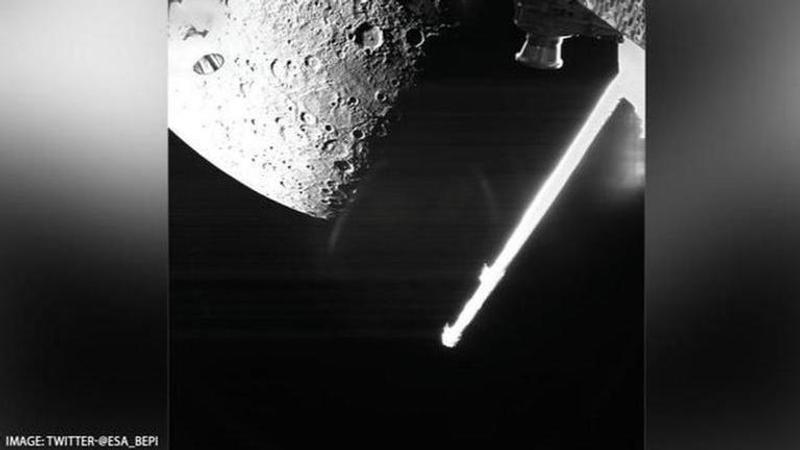Published 01:49 IST, October 3rd 2021
'BepiColombo' shares stunning Mercury images from its flyby; Check out the pictures here
ESA and JAXA's joint mission, costing $750 million, aims at a thorough study of Mercury including its origin and evolution so close to the Sun.

The BepiColombo spacecraft, jointly made by the Japanese Aerospace Exploration Agency (JAXA) and the European Space Agency (ESA) has completed its flyby of Mercury and beamed back the first image of the planet on October 2. Its encounter with the planet is the first of a total of six flybys it will be performing. The spacecraft recently conducted a flyby of Venus on August 10 and will conduct a total of nine flybys till 2025, as per the ESA.
Snapping the Solar system’s first planet
The spacecraft beamed back two images of Mercury where one was taken from a distance of 2,420km with the help of its black-and-white navigation camera Mercury Transfer Module Monitoring Camera 2, revealed ESA. The closest approach to the planet was just 200km that offered splendid images of Mercury’s topography.
Releasing a photo description, ESA explained, "The region shown is part of Mercury's northern hemisphere including Sihtu Planitia that has been flooded by lavas. A round area smoother and brighter than its surroundings characterizes the plains around the Calvino crater, which are called the Rudaki Plains." The agency also highlighted the 166 km-wide Lermontov crater explaining that the area looks bright because the “volatile elements are escaping to space. It also contains a vent where volcanic explosions have occurred."
The BepiColombo mission
The joint mission costing $750 million aims at a thorough study of Mercury including its origin and evolution so close to the Sun. The task will be done by two orbiters- Mercury Planetary Orbiter built by the ESA and Mercury Magnetospheric Orbiter built by JAXA. Both the devices will jointly study Mercury’s core, surface, magnetic field as well as exosphere. The planet is considered to be the most notorious owing to its proximity to the sun and scientists say it is easier to reach pluto than reaching Mercury for the same reason.
The name 'BepiColombo'
The agencies informed that the name 'BepiColombo' honours Italian scientist and engineer Giuseppe 'Bepi' Colombo, who is also known as the ‘Father of flybys’. Interestingly, it conducted the successful flyby on the 101st birth anniversary of the scientist who first explained why Mercury rotates thrice in its orbit every two orbits around the sun. ESA revealed that it was Colombo’s calculations that helped NASA’s Mariner 10 spacecraft to achieve three flybys of Mercury, in 1947, instead of one.
Image: Twitter/@ESA_Bepi
Updated 01:47 IST, October 3rd 2021



